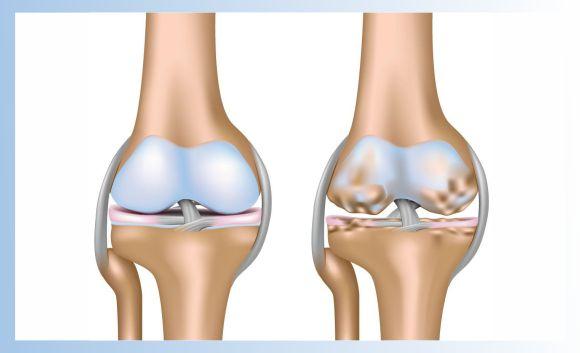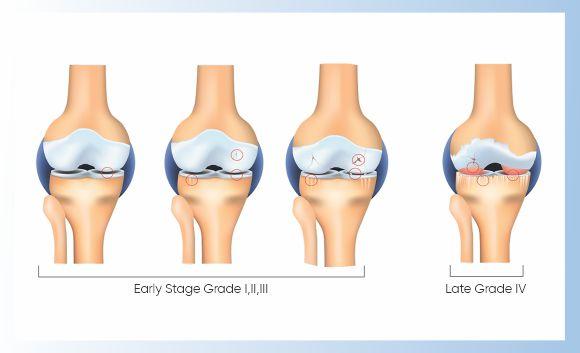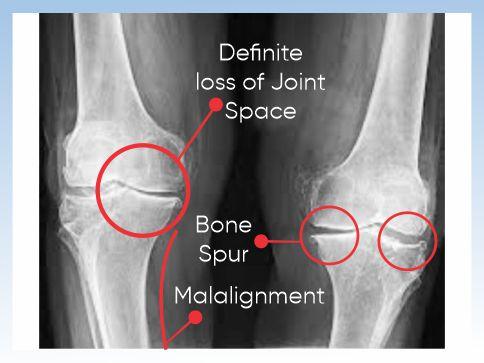Osteoarthritis
Osteoarthritis is the most common and important type of arthritis. It affects the joint cartilage or articular cartilage (A layer that covers the bone ends and makes the joint movement smooth) of the joints. Osteoarthritis mainly affects the large joints but the most common joint which is affected by osteoarthritis is the knee joint. When the cartilage layer starts deteriorating, it affects our normal joint movement and disrupts the natural joint function. People experience pain in their joints during joint movement. If your age is over 45 and you have pain in your knees, then you should be aware of osteoarthritis because it can be a reason for your knee pain.


Stages of osteoarthritis
Basically, osteoarthritis has 2 stages
Early Stage: Early Stage includes
- Grade 1- Doubtful reduction of joint space
- Grade 2- Marked reduction in joint space
- Grade 3- Definite reduction in joint space and visible bone spurs around the joint, at this stage there are slight changes in the normal joint alignment.
-
Late Stage -Late Stage include
- Grade 4 – Visible extra bone formation and, a marked reduction in joint space, severe malalignment of the joint which causes severe deformity.
Causes
- Muscle weakness: After the age of 40 our muscle mass reduces 8-10% every year, this muscle weakness exerts an extra load on the joints and causes damage to the joint cartilage.
- Tendon and ligament: Injury to those structures make the joint unstable. Weight transmission axis also affects, and this puts pressure on the joints and leads to further damage.
- Cartilage damage: With age and continuous wear and tear of the joint cartilage leads to cartilage degeneration and damage to the joint. Cartilage degeneration is the root cause of osteoarthritis.
- Deformity: If your joint is deformed due to injury or some other reason, it alters the weight transmission axis and creates uneven pressure on the joint, and leads to osteoarthritis
.jpg)
.
- Age: As your age increases your chances of having osteoarthritis also increase.
- Genetics: The gene for osteoarthritis is inherited by the next generation.
- Being obese: This is because there is an increased load on your joints and an increased potential for more joint damage.
- Sex: Women are more likely than men to develop OA
Diagnosis of osteoarthritis
During the physical examination, experts commonly check for swelling, tenderness, and flexibility. Imaging tests
- X-rays: First and basic screening is done by X-ray. The X-ray can show the joint space and bone spurs.
- Magnetic resonance imaging (MRI): MRI can be done to check if there is any soft tissue damage or other structural damage.
